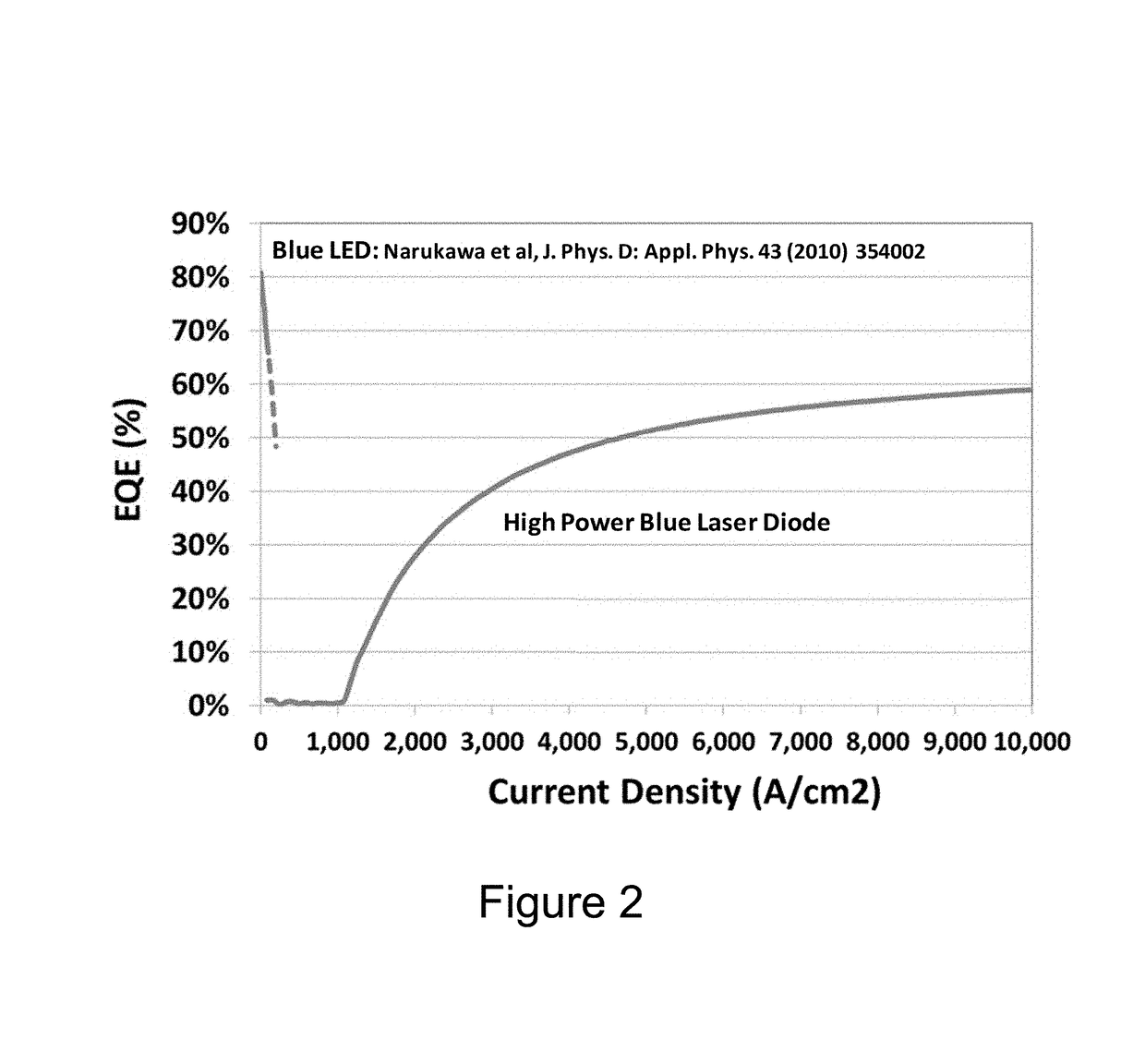Lidar systems including a gallium and nitrogen containing laser light source
- Summary
- Abstract
- Description
- Claims
- Application Information
AI Technical Summary
Benefits of technology
Problems solved by technology
Method used
Image
Examples
first embodiment
[0473]In a first embodiment the added infrared laser diode is included in the laser based illumination system and follows a separate optical pathway compared to the gallium and nitrogen containing laser diode emission and is not incident on the wavelength conversion member. FIG. 29 is a simplified schematic diagram of a laser light illumination system integrated with a LIDAR system including an additional LIDAR mapping laser according to the present invention. As shown in the figure, the integrated system 3100 is configured with a power source 3101 to supply power to both the LIDAR system and the illumination system (note that in some embodiments separate or multiple power sources could be used) along with a processor and control unit 3102 configured to receive power from the power supply 3101 and data or signals from the receiver portion 3131 of the LIDAR system. Based on external inputs 3190 such as user inputs, sensor inputs, or predetermined inputs to provide specified functiona...
second embodiment
[0476]In a second embodiment including an additional laser designated for LIDAR mapping such as an added infrared laser diode, the additional laser for LIDAR mapping follows a common optical pathway compared to the gallium and nitrogen containing laser diode emission and is not incident on the wavelength conversion member 3112. As shown in FIG. 30 below in another embodiment, the output electromagnetic radiation at the first peak wavelength from Ga and N based laser diode 3211 and the output electromagnetic radiation from the LIDAR mapping laser 3221 at the third peak wavelength is incident on the wavelength conversion member 3231. At least a fraction of the electromagnetic radiation with the first peak wavelength such as a blue wavelength is converted to electromagnetic with a second peak wavelength, such as a yellow peak wavelength. In a preferred embodiment, the resulting visible color of light generated in the laser based illumination system is a white light. The electromagnetic...
PUM
 Login to View More
Login to View More Abstract
Description
Claims
Application Information
 Login to View More
Login to View More - R&D
- Intellectual Property
- Life Sciences
- Materials
- Tech Scout
- Unparalleled Data Quality
- Higher Quality Content
- 60% Fewer Hallucinations
Browse by: Latest US Patents, China's latest patents, Technical Efficacy Thesaurus, Application Domain, Technology Topic, Popular Technical Reports.
© 2025 PatSnap. All rights reserved.Legal|Privacy policy|Modern Slavery Act Transparency Statement|Sitemap|About US| Contact US: help@patsnap.com



